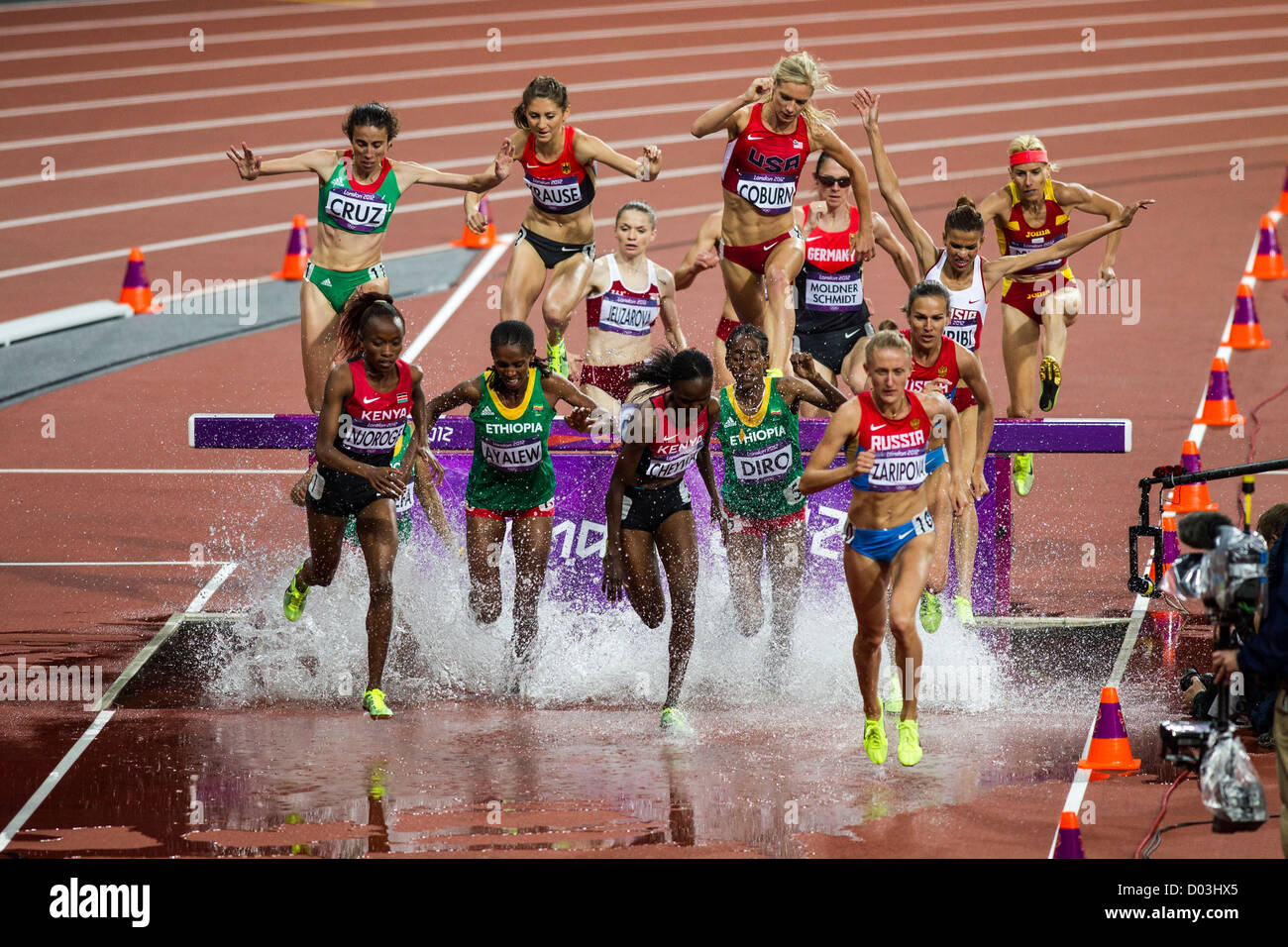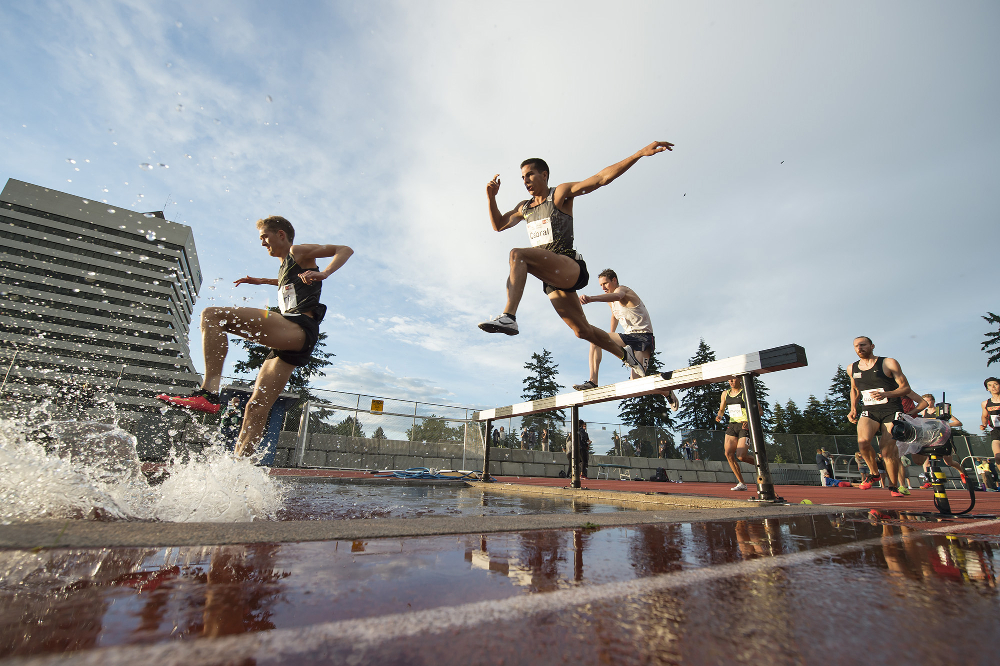History and Evolution of the 3000m Steeplechase: 3000m Steeplechase Olympics

The 3000m steeplechase, a captivating test of endurance and agility, has evolved significantly since its origins. The event’s unique blend of running and obstacle negotiation has captivated audiences for over a century, making it a mainstay in track and field competitions worldwide.
Origins and Early Years
The steeplechase traces its roots back to the 19th century, inspired by cross-country races that included natural obstacles like streams and fences. Early steeplechase events were characterized by diverse distances and varying obstacle configurations, often mirroring the terrain of the surrounding countryside. The first steeplechase race was held in 1860 at the University of Oxford, where a course was designed with hurdles and a water jump.
Introduction to the Olympic Games
The 3000m steeplechase made its Olympic debut in the 1920 Antwerp Games. Initially, the event was contested over 3000 meters with 28 obstacles, including seven water jumps. The event quickly gained popularity, showcasing the athleticism and resilience of the competitors.
Evolution of the Event
Over the years, the steeplechase has undergone several changes, refining its rules and techniques. The number of obstacles and water jumps has been standardized, ensuring consistency across competitions. The water jump, a signature element of the event, has also evolved. Early water jumps were often shallow and straightforward, but modern jumps are deeper and wider, demanding more technical proficiency from the athletes.
Technical Developments
The steeplechase has witnessed significant technical advancements, particularly in obstacle negotiation. Early runners often cleared the hurdles and water jumps with a simple running leap. However, over time, athletes developed more efficient techniques, including the “steeplechase hurdle,” a high-knee technique that allows runners to maintain momentum while clearing the obstacles.
Comparison with Other Obstacle Races, 3000m steeplechase olympics
The 3000m steeplechase shares similarities with other obstacle races, but it also possesses distinct characteristics. While other races often feature a wider range of obstacles, including walls, tunnels, and mud pits, the steeplechase focuses on a standardized set of hurdles and water jumps. This emphasis on consistency allows for more precise comparison of performances across different competitions.
Key Strategies and Techniques

The 3000m steeplechase is a grueling race that demands a unique combination of endurance, speed, and technical proficiency. Athletes must navigate a series of hurdles and water jumps while maintaining a strong pace, making strategic planning and precise execution crucial for success.
Water Jump Technique
The water jump is a defining feature of the steeplechase, presenting a significant challenge to athletes. A successful water jump involves a combination of speed, momentum, and precise timing.
- Approach: Athletes approach the water jump with a strong, controlled stride, ensuring they have sufficient speed to clear the barrier. They maintain a relaxed upper body posture and focus on maintaining their momentum.
- Takeoff: As they near the water jump, athletes initiate their takeoff, launching themselves over the barrier with a powerful push from their legs. They aim to maintain a balanced body position, ensuring a smooth and efficient transition.
- Landing: Upon landing in the water, athletes aim for a controlled descent, minimizing the impact on their legs and minimizing water resistance. They focus on maintaining a balanced posture and minimizing any unnecessary splashing.
Hurdle Technique
The hurdles in the steeplechase are higher than those in other track and field events, requiring athletes to develop specific techniques for clearing them effectively.
- Approach: Athletes approach the hurdles with a strong, rhythmic stride, maintaining a steady pace and focusing on their body alignment. They ensure they are positioned to clear the hurdle comfortably, avoiding any unnecessary adjustments.
- Takeoff: As they reach the hurdle, athletes initiate their takeoff, driving their lead leg forward and propelling themselves over the barrier. They focus on maintaining a balanced body position and maximizing their leg drive.
- Landing: Upon landing, athletes aim for a controlled descent, minimizing the impact on their legs and ensuring a smooth transition into their next stride. They maintain a balanced posture and minimize any unnecessary bouncing or braking.
Pacing and Energy Management
Successful steeplechase athletes must carefully manage their energy expenditure throughout the race. A well-planned pacing strategy is crucial for maximizing performance and avoiding burnout.
- Initial Phase: Athletes typically start the race at a moderate pace, focusing on establishing a comfortable rhythm and conserving energy for the later stages. They avoid pushing too hard early on, aiming to maintain a consistent pace.
- Middle Phase: As the race progresses, athletes gradually increase their pace, building momentum and challenging their competitors. They focus on maintaining a steady rhythm, ensuring they don’t overexert themselves and risk fatigue.
- Final Phase: In the final laps, athletes typically push their limits, sprinting towards the finish line. They focus on maintaining their form, maximizing their leg turnover, and utilizing any remaining energy reserves.
Notable Athletes and Records

The 3000m steeplechase has witnessed the rise of legendary athletes who have pushed the boundaries of human endurance and redefined the limits of this grueling event. From the pioneers who laid the foundation to the modern-day record holders, the event has been shaped by the dedication and grit of these remarkable individuals.
The history of the 3000m steeplechase is filled with captivating stories of athletes who have overcome adversity, broken records, and inspired generations of runners.
Top 10 Fastest Times
The following table displays the top 10 fastest times in the 3000m steeplechase, showcasing the elite group of athletes who have achieved this remarkable feat.
| Rank | Athlete | Country | Time | Date |
|—|—|—|—|—|
| 1 | Saif Saaeed Shaheen | Qatar | 7:53.63 | 3 September 2004 |
| 2 | Conseslus Kipruto | Kenya | 7:53.64 | 9 July 2011 |
| 3 | Brimin Kipruto | Kenya | 7:54.31 | 20 July 2011 |
| 4 | Ezekiel Kemboi | Kenya | 7:54.61 | 18 July 2012 |
| 5 | Paul Koech | Kenya | 7:54.97 | 20 August 2003 |
| 6 | Abraham Kibiwot | Kenya | 7:55.03 | 20 July 2011 |
| 7 | Jairus Birech | Kenya | 7:55.20 | 18 July 2012 |
| 8 | Evan Jager | USA | 7:55.28 | 17 July 2015 |
| 9 | Benjamin Kigen | Kenya | 7:55.39 | 16 July 2015 |
| 10 | Mahiedine Mekhissi-Benabbad | France | 7:55.79 | 16 July 2015 |
Comparison of World Record Holders
Saif Saaeed Shaheen, previously known as Stephen Cherono, holds the current world record of 7:53.63, set in Brussels in 2004. This record has stood the test of time for nearly two decades, demonstrating the exceptional nature of Shaheen’s performance. Shaheen’s record-breaking run was characterized by his impressive pace and strategic barrier clearance, showcasing his exceptional endurance and tactical awareness.
Conseslus Kipruto, the 2016 Olympic champion, came agonizingly close to breaking Shaheen’s record in 2011, finishing just one-hundredth of a second behind. Kipruto’s consistency and dominance in the steeplechase have made him one of the most formidable athletes in the event’s history. He has consistently challenged the world record, pushing the limits of human performance.
“The 3000m steeplechase is a test of both speed and endurance. It requires a unique blend of athleticism and tactical intelligence.” – Conseslus Kipruto
The world record in the 3000m steeplechase has been a source of intense competition, with athletes striving to etch their names in the history books. Shaheen’s record stands as a testament to the exceptional talent and dedication required to achieve greatness in this demanding event.
3000m steeplechase olympics – The 3000m steeplechase is a grueling test of endurance and agility, demanding athletes to conquer both distance and obstacles. One name synonymous with this challenging event is Soufiane El Bakkali , a Moroccan runner who has captivated audiences with his powerful strides and unwavering determination.
El Bakkali’s triumphs have elevated the 3000m steeplechase to new heights, showcasing the sport’s thrilling blend of speed, strategy, and sheer grit.
The 3000m steeplechase is a test of endurance and grit, demanding athletes to conquer both distance and obstacles. Imagine the thrill of victory, the rush of adrenaline, and the satisfaction of pushing your limits, all while seated in the comfort of a executive faux leather chair – a perfect place to analyze the race strategy and relive the exhilarating moments of the 3000m steeplechase Olympics.